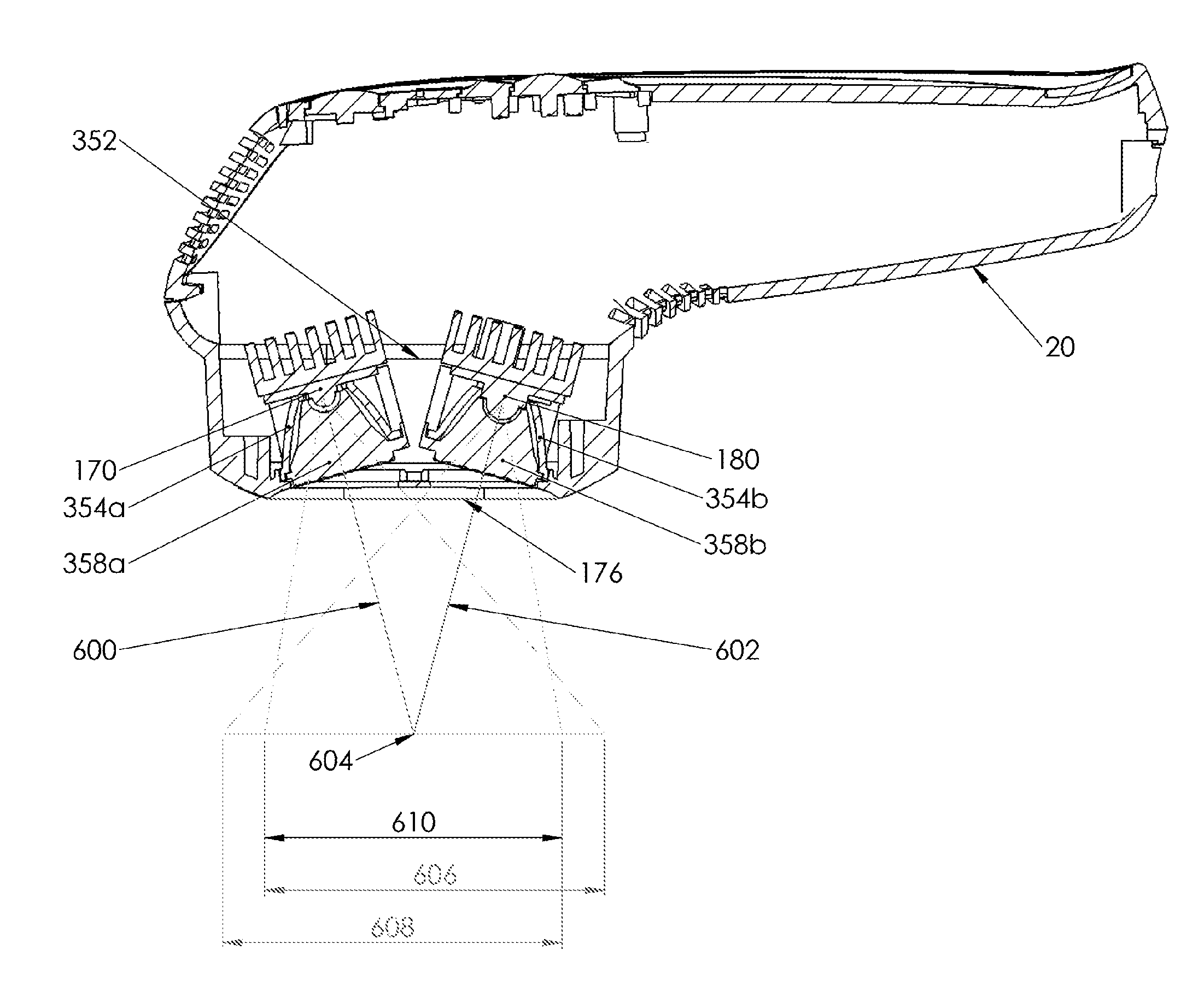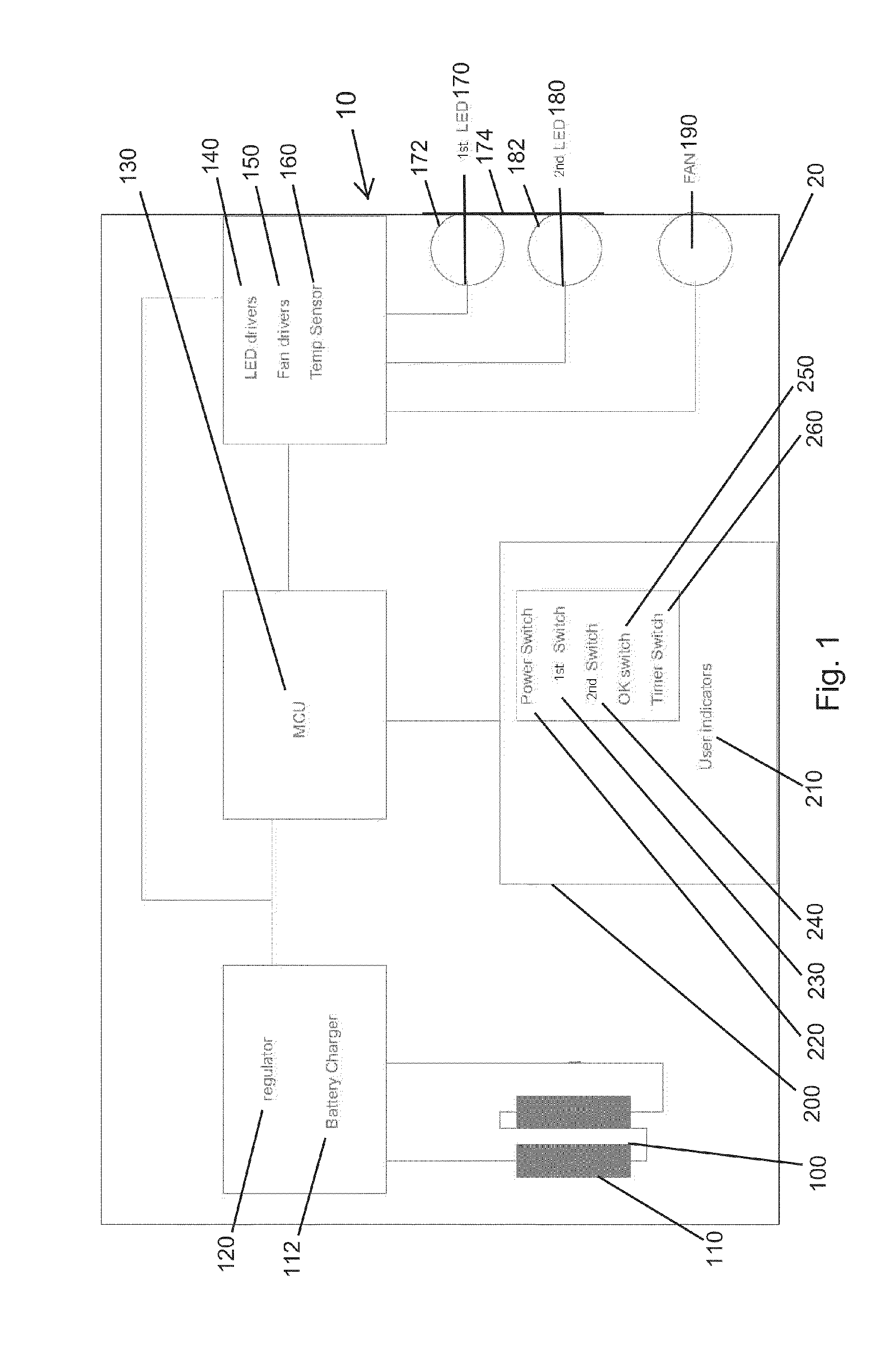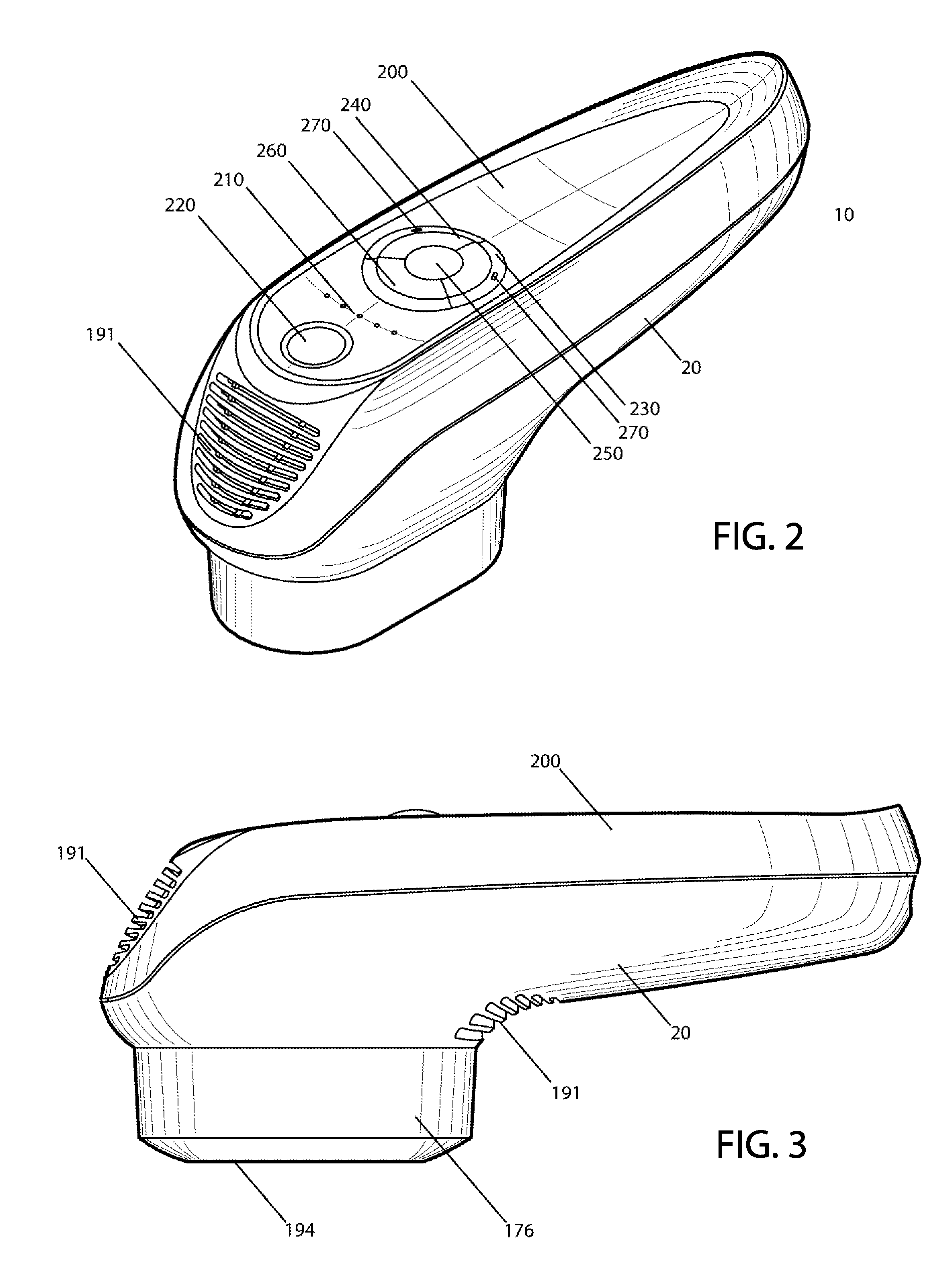High powered light emitting diode photobiology compositions, methods and systems
a light-emitting diode, high-power technology, applied in the direction of sleep-inducing devices, radiation therapy, therapy, etc., can solve the problems of insufficient leds, large, cumbersome, and inability to provide an adequate number of leds, and achieve the effect of enhancing light intensity
- Summary
- Abstract
- Description
- Claims
- Application Information
AI Technical Summary
Benefits of technology
Problems solved by technology
Method used
Image
Examples
experimental examples
[0147]Photobiology devices in accordance with the present invention were used to evaluate
[0148]effectiveness of treatment for a variety of disorders. Subjects were volunteers who were uncompensated for their participation. Application times were from 1 to 5 minutes for total body use and did not exceed two treatment sessions per day. Volunteers wore protective eye goggles similar to those used in UV tanning beds and were advised to remain well hydrated after each treatment.
[0149]In one application of photobiology treatment employing methods and devices of the present invention, a female subject in her mid-twenties presented with complaints of osteorthritis and rheumatoid arthritis, with pain in right hip requiring the use of crutches to walk. Phototherapy treatments once and twice daily using a device of the present invention lasted 1-5 minutes. Thereafter she reported the ability to walk without crutches, and with greatly reduced pain after one treatment. After one week, she report...
PUM
 Login to View More
Login to View More Abstract
Description
Claims
Application Information
 Login to View More
Login to View More - R&D
- Intellectual Property
- Life Sciences
- Materials
- Tech Scout
- Unparalleled Data Quality
- Higher Quality Content
- 60% Fewer Hallucinations
Browse by: Latest US Patents, China's latest patents, Technical Efficacy Thesaurus, Application Domain, Technology Topic, Popular Technical Reports.
© 2025 PatSnap. All rights reserved.Legal|Privacy policy|Modern Slavery Act Transparency Statement|Sitemap|About US| Contact US: help@patsnap.com



